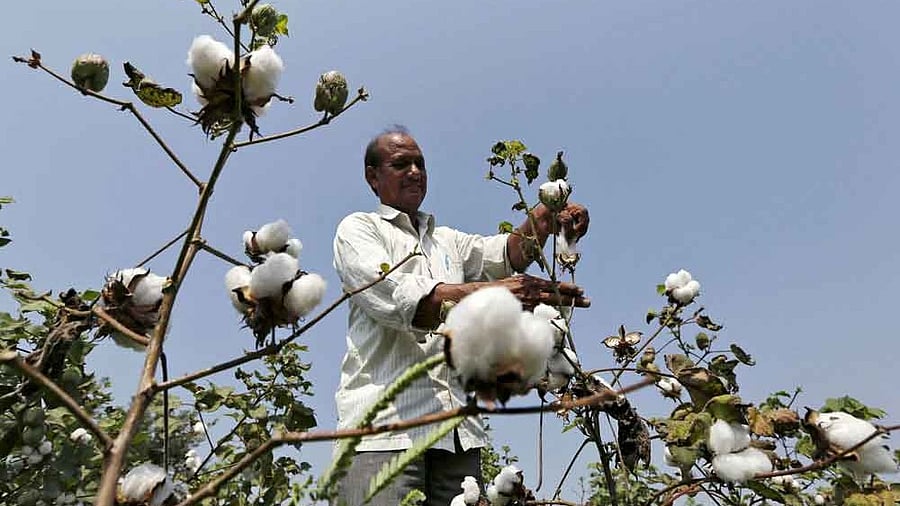
Cotton crop
Credit: Reuters File Photo
Mumbai: The total cotton acreage during 2024-25 is projected to be lower by over 10 per cent to 113.60 lakh hectare from 126.80 lakh hectare during last year, according to Cotton Association of India Chairman Atul Ganatra.
“This reduction in sowing area coupled with excessive rainfall
damage reported in major cotton growing regions of the country is likely to result in lower cotton production during the ongoing crop year,” Ganatra said.
The CAI Crop Committee in its last meeting held on December 17, 2024, projected Indian cotton production to be lower by about 7.70 per cent to 302.25 lakh bales of 170 kg each from 327.45 lakh bales a year ago.
The CAI Committee on Cotton Production & Consumption, which met on November 28, 2024, has also estimated Indian cotton production to be lower by 7.98 per cent to 299.26 lakh bales of 170 kg each from 325.22 estimated by it for last year.
“India is likely to import about 25 lakh bales during the 2024-25 season as against 15.20 lakh bales in 2023-24 while exports are estimated to be lower at about 18 lakh bales compared to 28.36 lakh bales in 2023-24,” Ganatra said addressing the 102nd Annual General Meeting of the CAI in Mumbai.
According to the latest International Cotton Advisory Committee report, world cotton production is estimated to be about 4.89 per cent higher at 25.30 million metric tonnes in 2024-25 than at 24.12 million metric tonnes a year ago. Consumption is also projected to be about 1.70 per cent higher at 25.40 million metric tonnes in 2024-25 than at 24.98 million metric tonnes a year ago, and consumption is likely to outpace production.
“The world ending stock this year is estimated to be slightly lower at 18.54 million metric tonnes compared to 18.56 million metric tonnes during last year,” he pointed out.
Speaking about the focus area, Ganatra said despite stupendous growth in the Indian cotton and textile sector, per hectare cotton yield in the country is among the lowest in the world and far below the world average cotton yield of over 800 kgs per hectare.
“One of the main reasons for our low cotton productivity is the use of obsolete GM cotton technology by about 95 per cent of our cotton farmers. Over the years and in the absence of any advancement in GM technology in India, Pink Bollworms have developed resistance to GM cotton seeds,” he said.
According to Indian researchers, the long-duration crop cycle along with the long flowering and fruiting window of Indian cotton, is unsuitable for most rain-fed areas and is susceptible to Pink Bollworm infestation. Introduction of new seeds of high-yielding varieties with good fiber quality which are best suited to local conditions and are tolerant to locally prevalent biotic (insects and pathogens) and abiotic (specific window of temperature, drought) factors is the need of the hour for increasing productivity at least to the world average productivity mark.